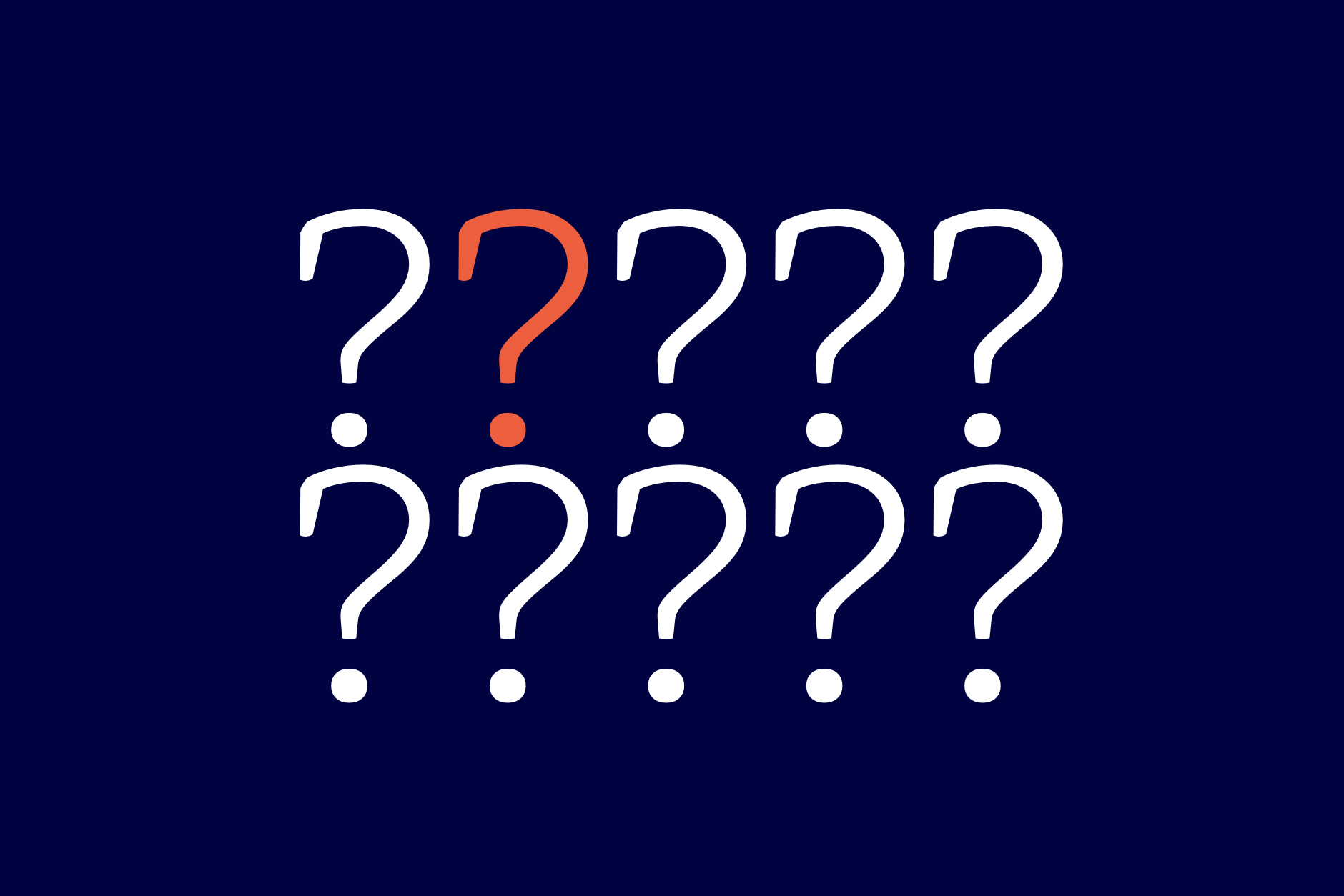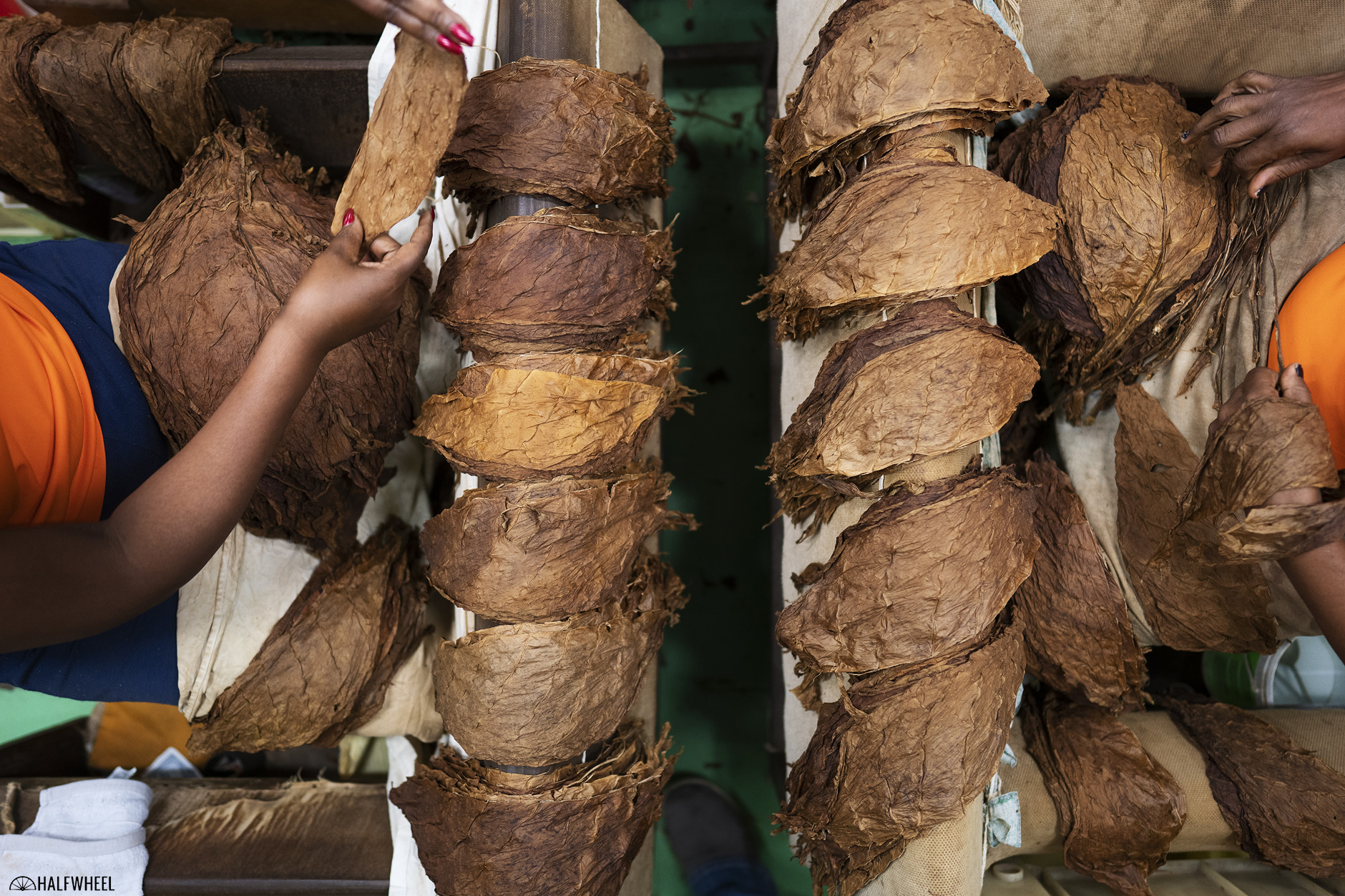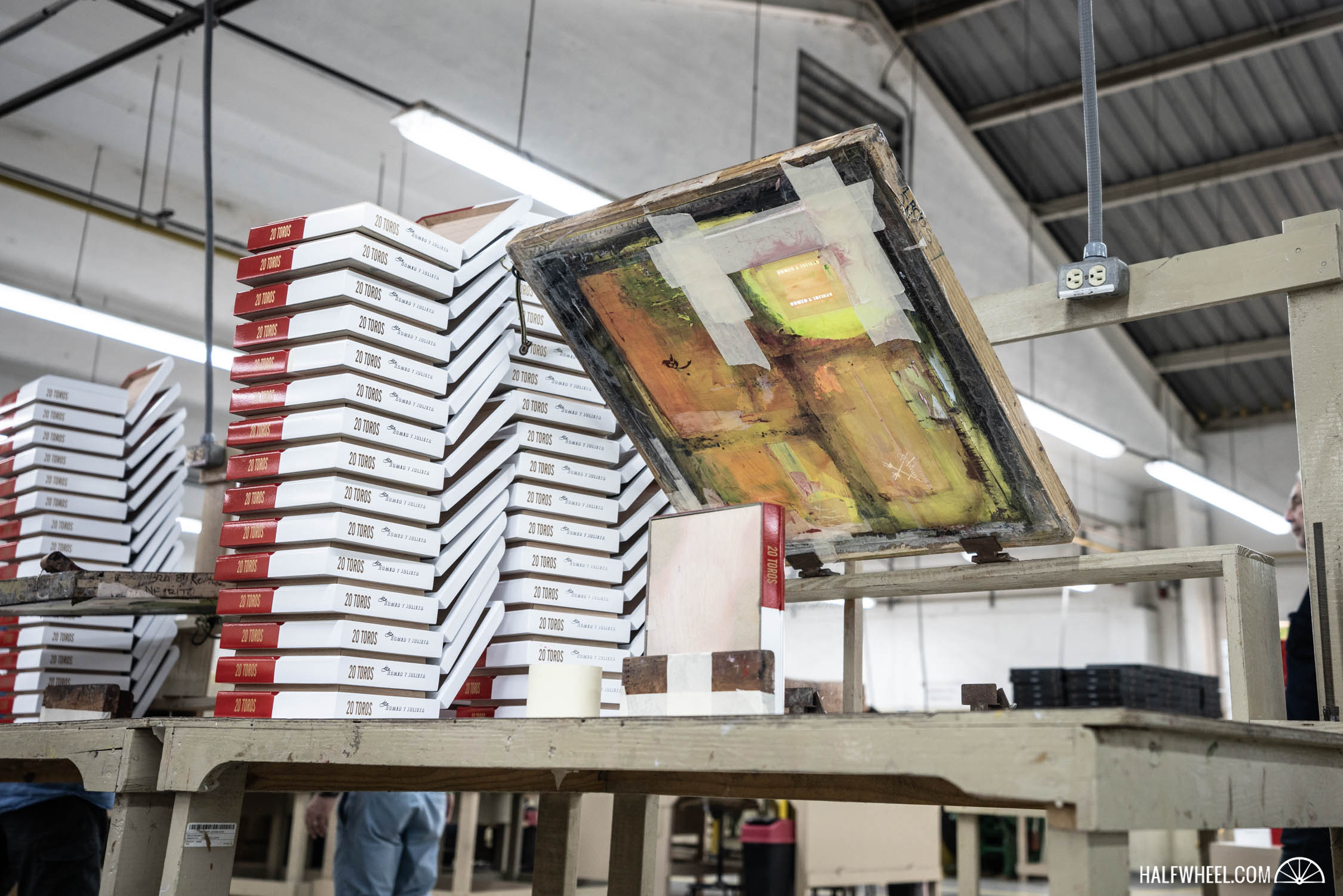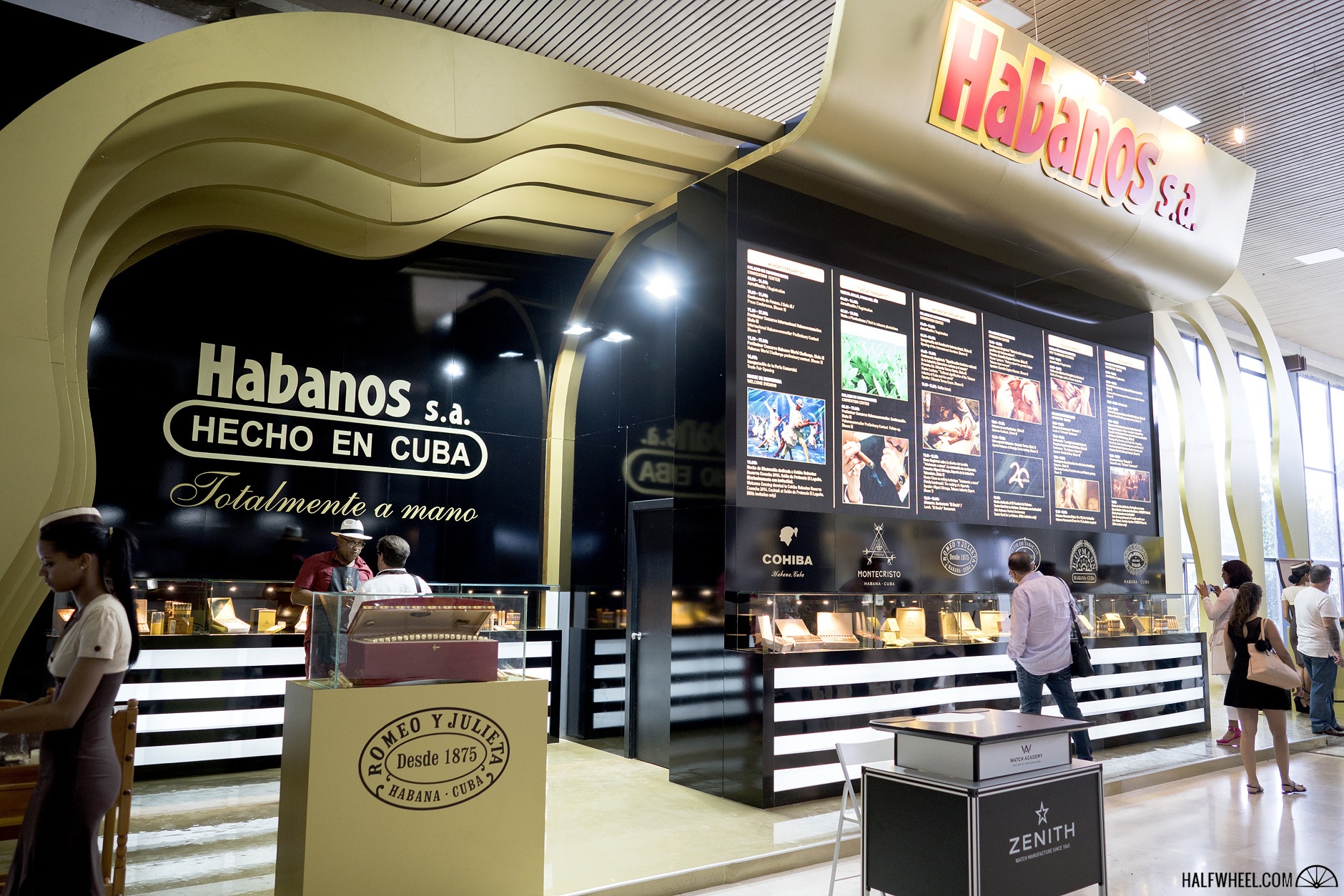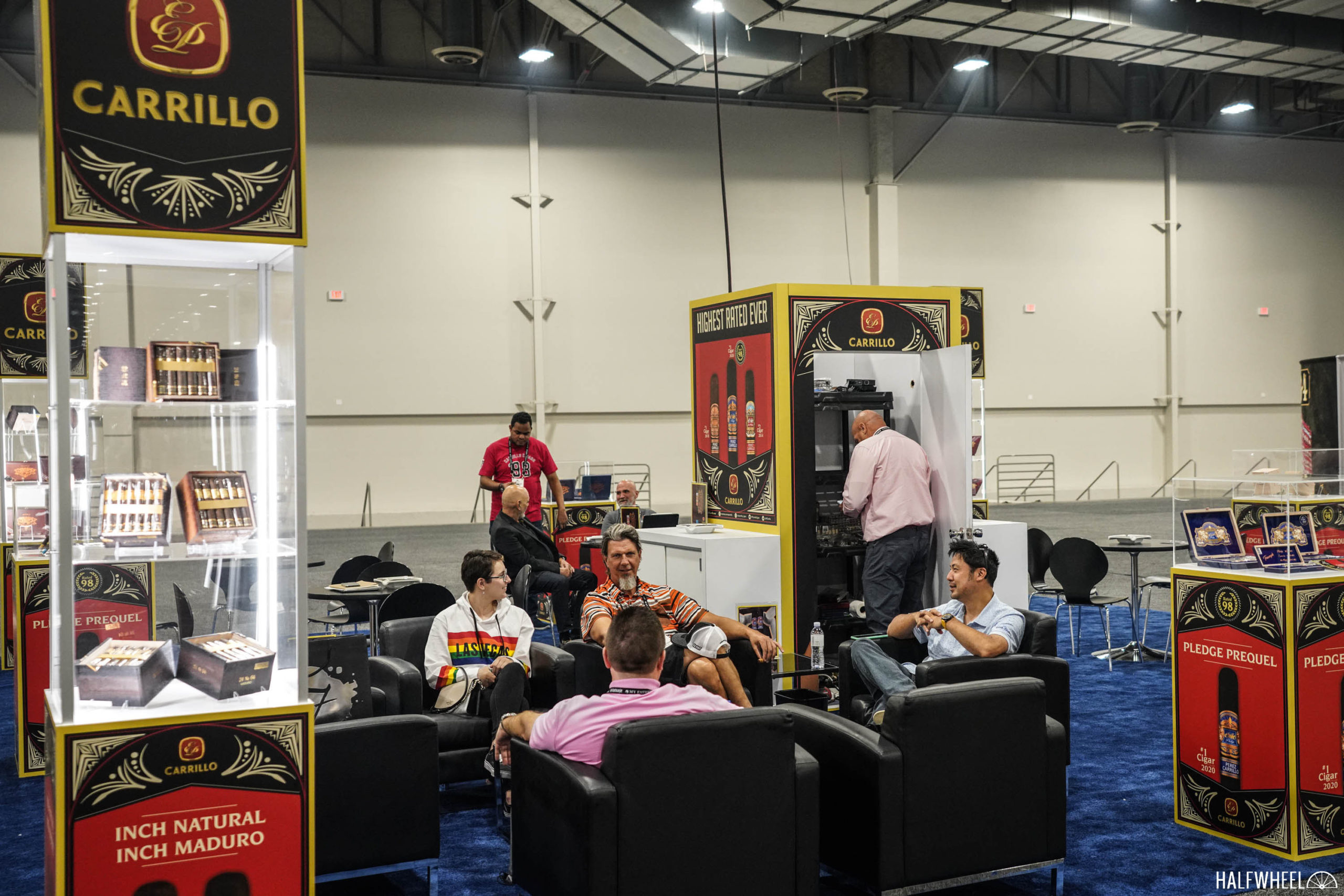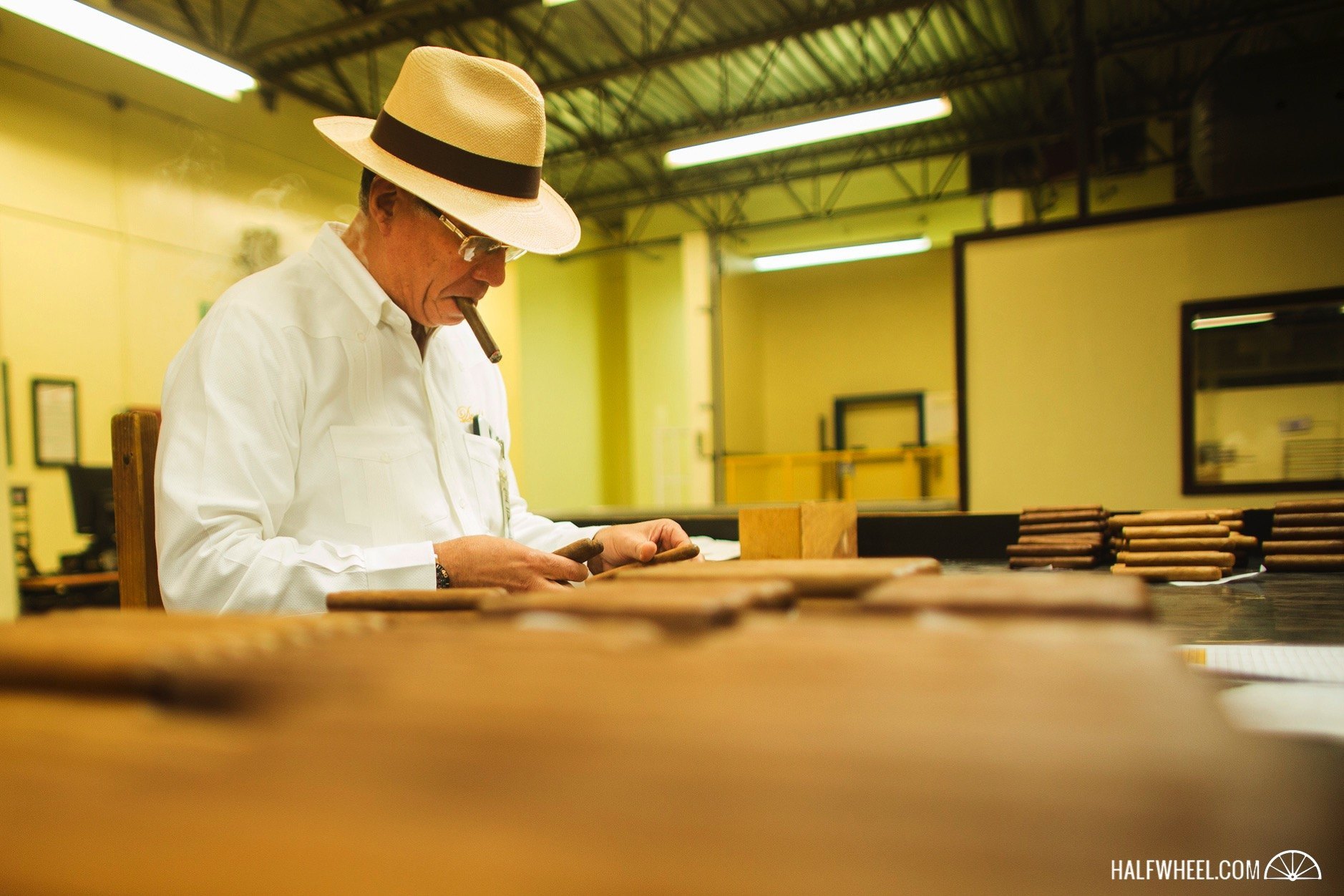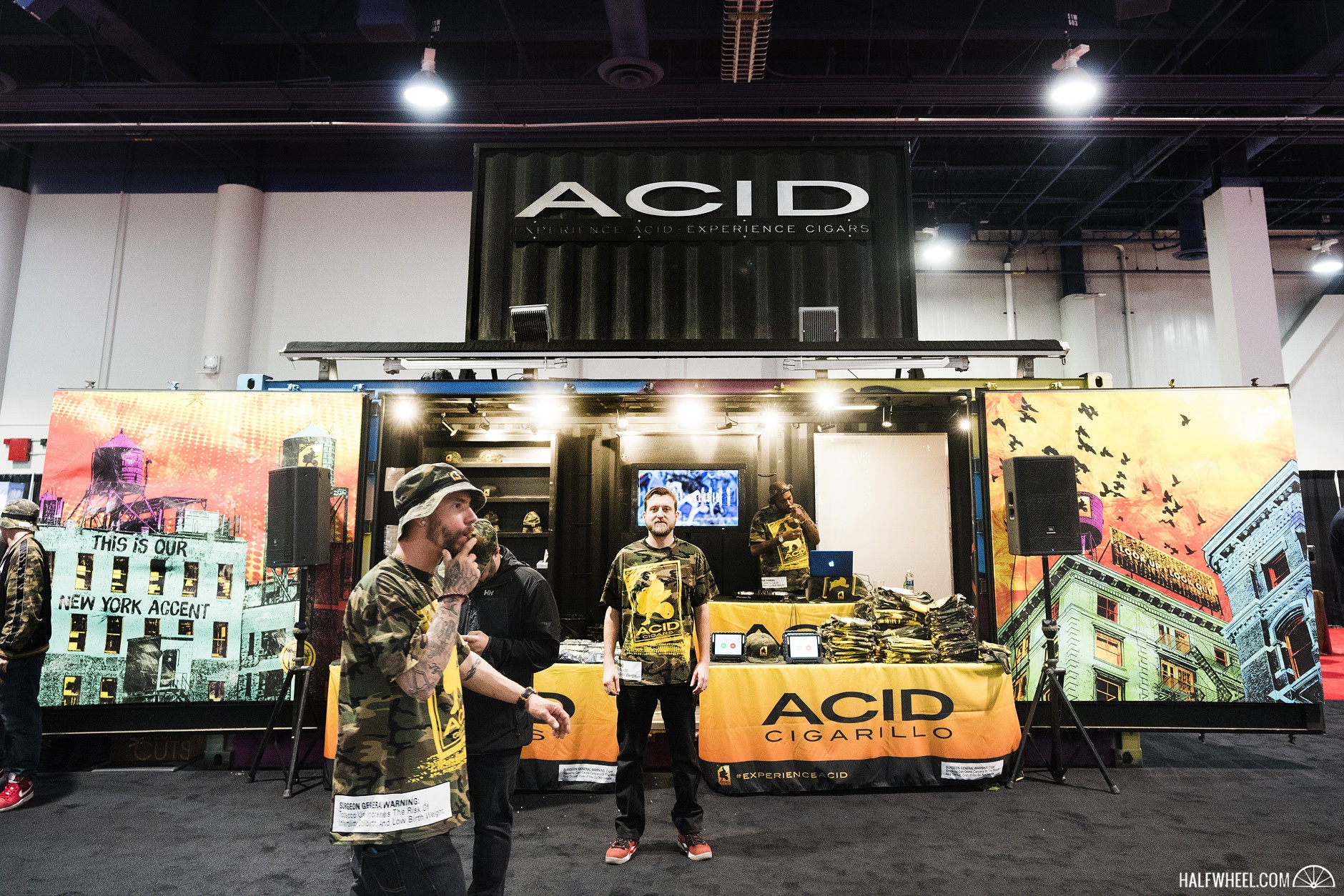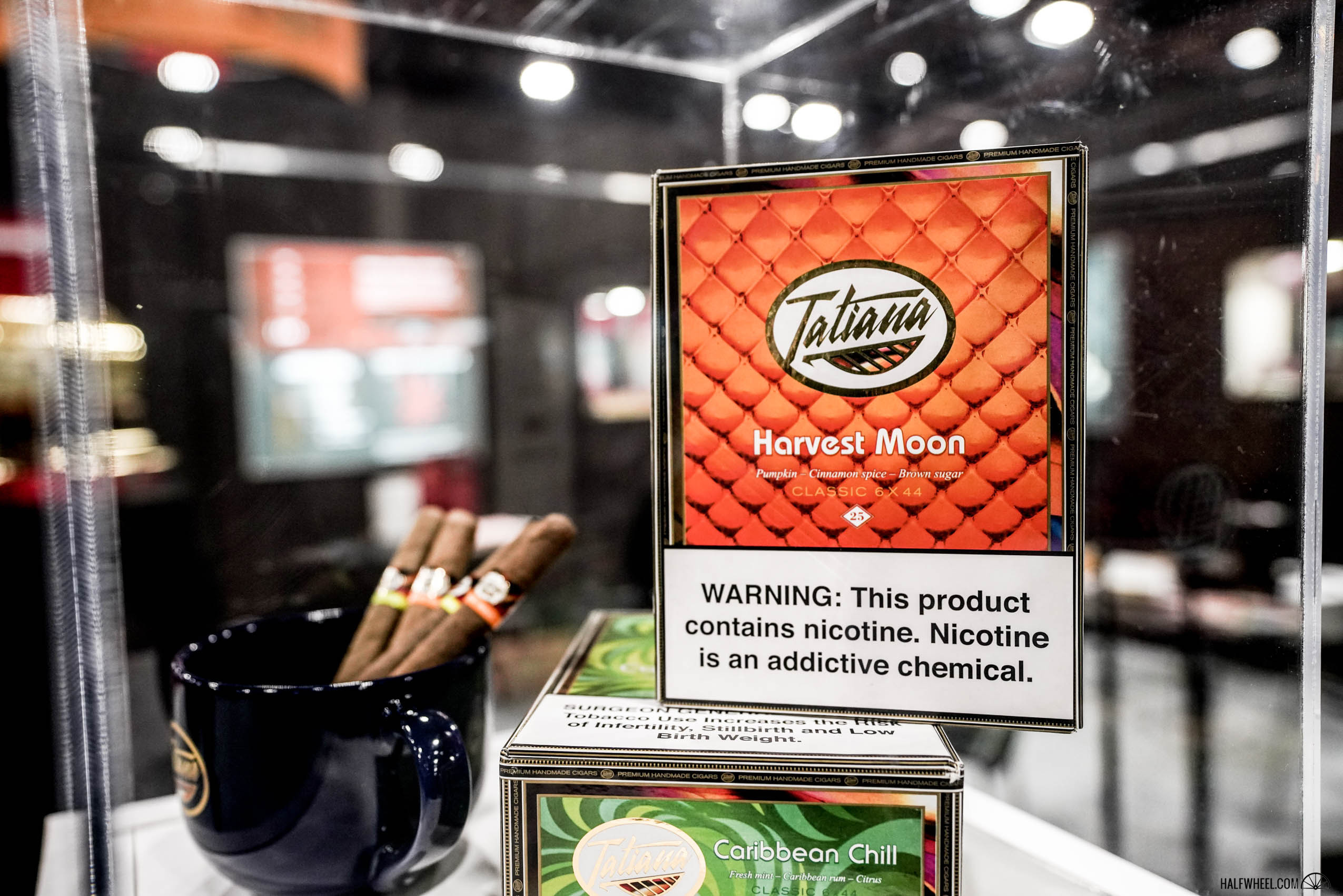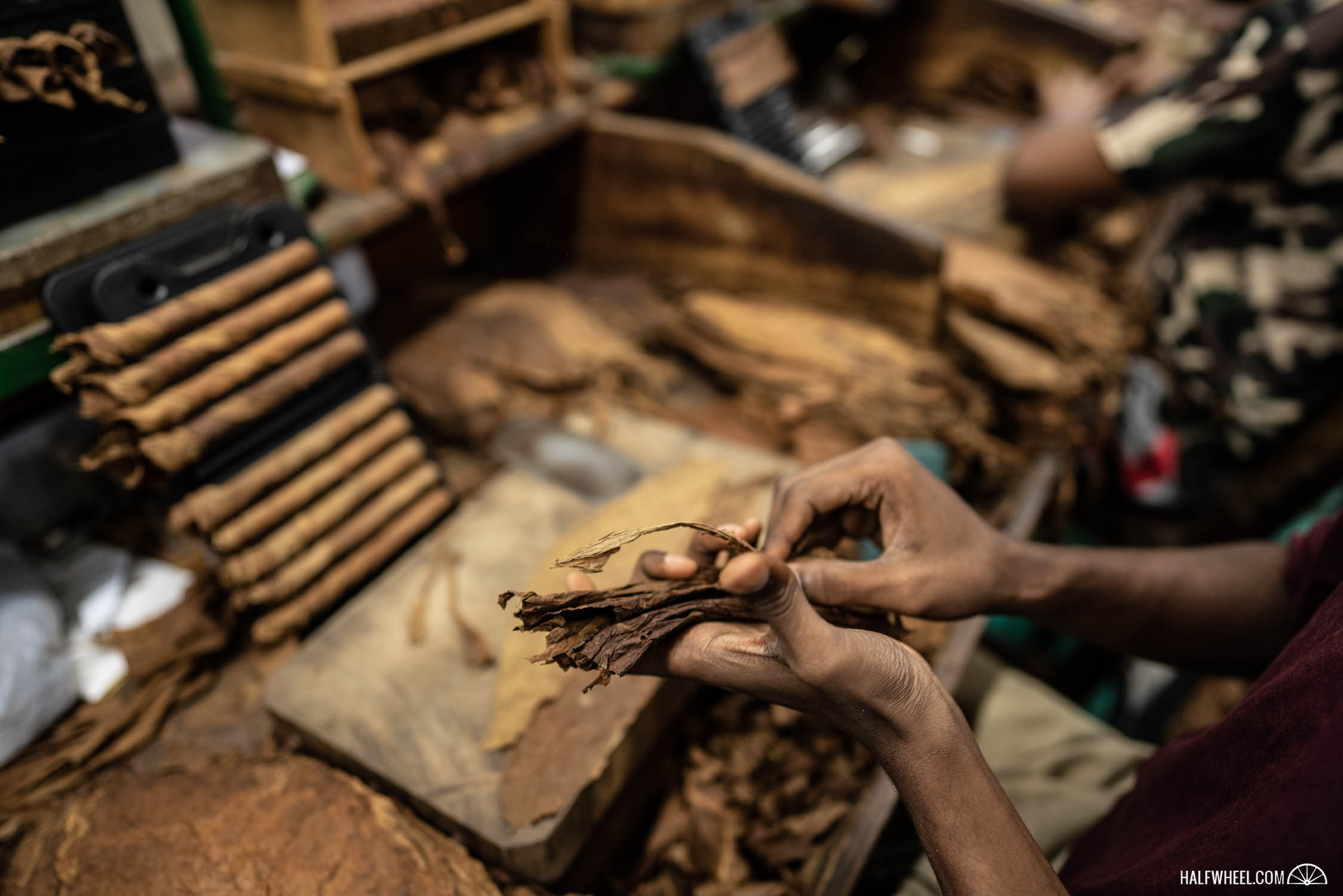There are a handful of halfwheel traditions, none of them have a longer history than this one. Ten Questions started before halfwheel under a simple premise: what were the 10 cigar-related questions I was most interested in regarding the upcoming year.
Since then, the tradition has expanded to go from 10 questions and accompanying thoughts about those questions to now include predictions for each question. That’s followed up by an article 363 days later where Patrick Lagreid judges how well my predictions fared on each topic.
This year, I’m embracing an attitude of less is more. I gave myself a 350-word limit for the body text of each question. That ended up being tough with two questions, but it made the article a bit more enjoyable to write. Alas, 10 Questions for 2022.
1. WHERE DOES SUBSTANTIAL EQUIVALENCE FOR CIGARS END UP IN 2022?
Currently, the product approval part of the U.S. Food & Drug Administration’s (FDA) regulations of tobacco is on hold for cigars that meet certain qualifications, i.e. pretty much every cigar sold in a humidor today except flavored cigars.
The basics of the convoluted story are: a court order signed last August delayed that part of the regulations until after a National Academy of Sciences panel delivers a report to FDA—expected this spring—and FDA decides whether it should follow through with what it planned to do or do something different for premium cigars. At least four different government entities (the panel, FDA, the Department of Justice and a federal judge) must all sign off on what FDA decides to do, which complicates things to say the least. But even that might not be the end of it thanks to an ongoing lawsuit.
Many cigar companies have looked at this period of waiting as a green light to release new products, and many have been releasing new cigars. But beyond that, the delay also means the cigar industry still has not gone through the most strenuous part of the regulations that were introduced in 2016. For example, new products have not stopped coming out since 2016.
To me, the likeliest scenario is that FDA ultimately decides to treat cigars like it said it would in 2016—i.e., just like every other tobacco product—but I probably wouldn’t even peg that at 50/50 odds. What I do know is that whatever world comes after this is very different than the one the cigar industry has lived under for the past five years. Even if FDA were to give the cigar industry the most favorable outcome and just drop product approval altogether—seemingly the least likely scenario—that’s a different world than the one we live in now because it removes a large chunk of uncertainty that has persisted for the past five years.
I am much more interested in the effects the decision has on the cigar industry than I am the decision itself, but that’s too much speculation for this editorial.
Prediction: I am really torn about the prediction here, particularly the timeline being the end of 2022 because I think it could be very close to the end of the year, but my official prediction is substantial equivalence applications for cigars will be due in the first half of 2023.
2. BY THE END OF THE YEAR, DO INVENTORY LEVELS LOOK LIKE DECEMBER 2019 OR DECEMBER 2020?
The end of 2019 was not the most upbeat time for the U.S.-focused cigar industry. For reasons predicted here, inventories had reached unsustainable levels across many of the retail channels in the U.S. and by Q4, it was quite apparent that the bubble was bursting.
Then a global pandemic happened and suddenly the supply/demand issues were flipped on their heads.
This was due to a number of factors; I’d argue both a push factor because cigar factories were producing fewer cigars after February 2020, but also a noticeable pull factor because demand increased. Suddenly, companies who routinely did not have backorder issues had backorders, and those issues have persisted into most of 2021. But it seems like things have started turning a corner, demand has probably cooled a bit and cigar companies are certainly shipping more cigars to the U.S. After talking to a number of retailers in different parts of the country, it seems like the backorder issues are trending in the right direction.
The problem is, I think the overall supply issues are heading in the wrong direction.
None of the issues that caused the down year in 2019 seem to be fixed. The manner in which many, but not all, retailers make purchasing decisions remains broken. In talking to manufactures, I don’t get the sense many retailers know how many cigars they should have, let alone how many of a specific SKU they should have. Cigar manufacturers aren’t going to make fewer cigars in a world where their retailers are asking for more inventory and I don’t fault them for it. Once the retailers are oversupplied and cut back their buying, a race to the bottom exists where cigar manufacturers begin offering more and more aggressive discounts to entice retailers to purchase. And since everything must roll down hill, consumers end up paying the price as manufacturers offset increased manufacturing costs and lower volume with higher MSRPs while simultaneously offering more aggressive discounts to retailers, most of which are rarely passed onto consumers at the brick-and-mortar level.
Prediction: From a cigar inventory level, the end of 2022 will look much closer to 2019 than 2021.
3. DOES THE SHORTAGE OF CUBAN CIGARS GET ANY BETTER BY THE END OF 2022?
My understanding of Cuban cigars and the market for them is largely based on retailers who are willing to sell to overseas customers. As such, before I broached this subject Patrick and I emailed about a dozen different people who would have a far better understanding of this than I did. While many were unwilling to talk, the responses we did get back paint a picture far worse than I imagined.
From what I can tell, the supply of Cuban cigars has been the worst it’s been in a decade, noticeably worse than any stretch of time I can remember and it seems to be a global problem. Obviously, some countries are faring better than others, but it seems there are extreme issues when it comes to the consistent availability of Cuban cigars that are a robusto size or larger. Yes, some brands are still in stock, but staple cigars that were rarely if ever out of stock seem to be regularly unavailable at many stores.
Turns out, that seems to be what many distributors are seeing as well. I heard about warehouses being empty and one distributor suggested this problem could persist for years, plural.
Getting information out of Cuba is a tough task, but if I had to guess the reasons for the shortage are numerous and include: Habanos S.A.’s general inability to supply the demand for Cuban cigars pre-pandemic, the increased demand for cigars in the post-COVID-19 world, the aforementioned issues with workforces at cigar factories, poor harvests in previous years, and the increased civil unrest in Cuba in 2021. Side-bar: I’d be curious to know if more Cubans are entering the private sector in wake of some planned policy changes.
Prediction: There’s no real reason why I think this gets much better next year, but it’s difficult to imagine a world where it gets much worse than this. I suspect it’s more or less the same, though there might be slight improvements in specific areas. Second prediction: Patrick is going to hate me for making him grade this.
4. DOES CUBA’S NEXT HUMIDOR AUCTION TAKE PLACE IN FEBRUARY OR SEPTEMBER?
Cuba’s annual cigar festival, the Festival del Habano, typically takes place in February in Havana. The 2021 event was canceled due to COVID-19 and Habanos S.A. conducted a virtual event in May. The virtual event included many of the various parts of the Festival del Habano—new product announcements, tours of factories or farms, pairing events, and contests—with one major exception: the auction.
While Habanos S.A. has still not announced anything regarding the 2022 event, some outlets—notably, Cigar Aficionado—reported in October that the event would take place from Feb. 21-25, 2022. A little more than a month later, we started hearing rumors that the festival had been canceled. Despite numerous attempts over many months, we have not been able to get an on-the-record statement from Habanos S.A. one way or the other. For its part, Habanos S.A. has not done anything publicly that would suggest it plans on holding the event in February. There is still no official announcement and there’s no way to register to attend the event.
Beyond just canceling the 2022 festival, we’ve heard from some people that Habanos S.A. was looking at holding a humidor auction in September.
The humidor auction normally takes place at the conclusion of the Festival during a gala evening. In 2020, six lots sold for a combined €4.27 million ($4.71 million at the time), with the proceeds designated to go towards funding Cuba’s healthcare system. But beyond the money, the auction also serves a number of other purposes for Habanos S.A.: it can flex its muscles a bit to show the premium prices that Cuban cigars can command, it’s a way for Habanos S.A. to interact with some of its best customers, and there’s a lot of publicity.
So I can understand why Habanos S.A. wants to hold the auction, even if it doesn’t hold the other parts of the festival. If Habanos S.A. does what the rumors suggest and hosts the auction in September, it also raises another question: do we see multiple humidor auctions per year so Habanos S.A. can generate even more auction results?
Prediction: It’s not taking place in February, but I expect Habanos S.A. to hold a humidor auction at some point in the second half of 2022. If I had to guess a month, I’d say September; I don’t know anything specifically, but that’s what people on the internet are saying and when have people on the internet ever been wrong?
5. WHEN ARE THESE NEW PREMIUM CIGAR ASSOCIATION INITIATIVES GOING INTO EFFECT?
Also, what are they?
After many years of many issues plaguing the industry’s most notable trade organization, the 2021 PCA Convention & Trade Show seemed to mark a turning point in how the organization was responding to these issues. There was a mea culpa and public acknowledgements that there were problems. There was also talk of new initiatives—some disclosed, some not—that the PCA was planning on doing to try to not only address these issues, but also to expand the usefulness of the organization.
It’s been five months since the trade show and I can’t point to anything that I’ve seen that would suggest that these changes—or really any notable changes—are being implemented other than a GoFundMe campaign that launched in August. No changes that I’ve heard about—officially or through the grapevine—regarding the trade show; I can’t point to any new initiatives that the PCA has launched in regards to its much-talked about efforts to increase retailer participation on local issues; and certainly nothing that would suggest the PCA is doing the messaging to make sure people know about what it’s doing. Given how much I’ve written about the PCA over the years, I’m guessing if the PCA was making major changes, one of my sources might have said something.
As I’ve mentioned before, the PCA does more than just host a trade show and partially fund a lawsuit. That lawsuit has been much more successful than many would think and the impacts of the lawsuit are benefits that are enjoyed by the full cigar ecosystem, from consumers to manufacturers. The PCA—and its fellow plaintiffs in the lawsuit—have not done a great job hammering these points home, particularly on a consistent basis. Given the issues the PCA faces within the industry, I’d argue the messaging about what the organization is doing is almost as important as the actions themselves. What’s disappointing is that it seemed like the PCA understood this and wanted to do something about it, but instead, it seems—a GoFundMe not withstanding—it’s been more of the same.
*One day after writing the above, the PCA published this article outlining its accomplishments from a lobbying standpoint. This type of messaging is new to me and I think it should happen more often. I am glad to see them publishing things like this.
Prediction: I’m going to try to be optimistic and say that we’ll hear a lot more about them at the 2022 PCA Convention & Trade Show but I’m not sure why there’s any reason to believe that words have turned into actions given what’s taken place in the latter half of 2021.
6. HOW MANY COMPANIES ARE MAKING ADVENT CALENDARS IN 2022?
We try to avoid declaring any year in the cigar industry as The Year Of ____, but at times it felt like 2021 was The Year of Samplers.
And there were a few that really caught my eye: Advent calendar samplers from Oliva, Smoke Inn and Tatuaje, though the latter was delayed until 2022. Based on early feedback from the Oliva Holiday Countdown Calendar, it seemed like sales were better than expected and strong overall. Given the copycat nature of this business, I have to imagine we will see more companies enter into this space.
While I purchase a lot of cigars, I’m far from a normal consumer given that almost all of “my” buying is based on the needs of halfwheel. But I still struggle to see why Advent calendars, at these price points, make sense. To me, it seems like a pretty expensive Advent gift and buying someone an Advent calendar as a Christmas gift is not something I would do, but to each their own.
What I can say is that the two entries that went on sale this year from Oliva and Smoke Inn were very impressive. The Oliva sampler ended up being a great value if you like most of what Oliva sells, and the quality of the packaging Smoke Inn used for its sampler was extremely impressive, some of the best built packaging I’ve seen from any company this year, let alone a retailer. If I was working for a cigar manufacturer and sitting in a brainstorming meeting for new products, I think it would be negligent to not mention the Advent calendar idea. As such, I suspect many companies are seriously considering doing it for next year.
Prediction: Patrick set the over/under on the number of companies making Advent calendars in 2022 at 4.5. I will take the over.
7. WHAT WILL COME OUT OF ELADIO DIAZ’S NEW FACTORY?
This editorial used to be the questions I personally had heading into a new year, but as time has gone on it seems the focus is more on writing about the most impactful topics for the new year and the accompanying predictions. On a personal level, there’s no question—outside of FDA—that I am more interested than what kind of cigars Eladio Diaz’s new factory will be making once it opens.
Diaz spent 35 years at Tabadom Holding, Inc., the company behind Davidoff’s Dominican factories, starting at Tabadom when it was still owned by Henke Kelner and before Davidoff bought the manufacturing operation. Earlier this year, he left Davidoff.
His title was “quality director” but the more I learned about Diaz, I came to understand he played a major role in the company’s blending. What’s particularly fascinating to me is that while he was tasked with developing blends for Davidoff, the cigars he seems to personally enjoy aren’t necessarily a list of Davidoff’s popular sellers. From what I’ve been told by many close to him, Diaz’s profile of cigars is noticeably stronger than many—if not most—Davidoff cigars. The body is usually on the richer side, though the complexity is similar to what you might find in a Davidoff. Over the years, I’ve had a chance to smoke some of the cigars Eladio Diaz makes for his birthday and those cigars certainly meet that description.
In a couple of weeks, Diaz and his family will open up their own factory: Tabacalera Diaz Cabrera. The plan is to focus on client brands and I imagine Diaz’s expertise will be in demand. But there’s one major caveat: Diaz presumably won’t be working with Davidoff’s extensive tobacco library. I have no doubt that Diaz will be able to procure many of the same tobaccos he’s worked with over the years, but few companies have the collection of tobaccos that Davidoff boasts.
As someone that has been a fan of both Diaz’s personal cigars and the Davidoffs that seem to show more of his personal style, I cannot wait to begin smoking these cigars.
Prediction: Cigars will come out of Eladio Diaz’s new factory.
8. HOW MANY COMPANIES STOP SELLING FLAVORED CIGARS IN CALIFORNIA BY THE END OF 2022?
Last year, the California Legislature passed a bill that would ban the sale of most flavored tobacco products in the state. There were exemptions included for a few products: hookah tobacco, pipe tobacco and premium cigars. For cigars, the bill would allow flavored large cigars to continue to be sold but they must have a wholesale price of at least $12, meaning the cigars would retail for nearly $40 given California’s tobacco tax and the way retailers typically set margins.
While the bill was signed into law, it’s still not in effect because of California’s unique use of direct democracy. California allows for bills passed by its legislature to be overturned by voters, and that’s what could happen to this law in November. It will be on the ballot for voters in California who will be asked whether they would like the law to take effect or be rescinded. In the mean time, some cities have decided to introduce their own bans on flavored tobacco, some of which have passed.
If the law survives the ballot referendum, it could go into effect as early as Dec. 8, 2022. The timing will likely depend on two factors: how quickly California certifies the vote and whether lawsuits delay implementation.
For a number of reasons, it’s going to be fascinating to see what happens in California if the law does go into effect. Would (enough) retailers adjust their margins so that these cigars remain somewhat affordable? This is rather relevant as I’m not sure there are very many flavored cigars that have a wholesale cost of $7, let alone $12. Will some companies decide to stop selling flavored cigars in California because it’s not worth the hassle for what’s likely to be a huge drop in sales? While California could become the first state to more or less ban flavored cigars, it’s not going to be the only state to seriously try. And the $12 price point is also an interesting topic to follow in the court system because FDA previously considered, though abandoned, using a price point to differentiate types of cigars.
Prediction: Zero. I suspect that the law won’t actually be enforceable by the end of the year. I don’t have any polling data that would indicate whether the law will survive the referendum, but there have already been lawsuits filed to overturn the law and I suspect at least one of them will be able to find a judge to issue an injunction that will at least delay implementation until after 2022.
9. WILL FDA ADVANCE PLANS FOR A FEDERAL BAN ON FLAVORED TOBACCO IN 2022?
Earlier this year, the Biden Administration announced plans to ban flavored tobacco products on the federal level. An April 2021 press release didn’t say much in the way of specifics, but did say that FDA was looking at banning both menthol and the use of all flavors in cigars. For those wondering, flavored cigarettes were already banned except for menthol cigarettes. Since then, little has been said publicly about the matter, including whether the ban might apply to larger cigars like premium cigars, which is something that was rather unclear to my sources when the announcement was made.
I suspect we won’t hear more about this until after the Senate has confirmed a permanent FDA commissioner and after FDA appoints a new director of its Center for Tobacco Products. There are a laundry list of other political factors that will influence what and when a decision is made, and then even after FDA announce its plans—which is likely years away—there will be inevitably be some very expensive lawsuits.
Even if you don’t smoke flavored cigars, the nature of the premium cigar industry means that a ban on flavored cigars would affect you given it will have a massive impact on companies like tobacco growers, retailers and many manufacturers. There’s also the bigger picture to think about, such as how many people would lose their jobs because of this.
While I don’t think it will have much impact in 2022, this is a major threat looming for the future of the cigar industry. It’s also one that might be very much out of this industry’s hands as there are larger factions—big tobacco, Swisher and its machine-made competitors, the anti-tobacco groups—who have more at stake and more money to spend on the fight than the premium cigar companies. If I’m certain about one thing it’s that this won’t be the last time a question regarding a federal flavored tobacco ban is mentioned in a Ten Questions editorial.
Prediction: I don’t think there will be much done on this in 2022. My best guess is: FDA gets as far as issuing an ANPRM next year to get some comments, which would be an early step in what’s likely to be a long and contentious process towards an eventual ban.
10. DO THE QUALITY CONTROL ISSUES IMPROVE IN 2022?
I don’t need some sort of deep dive into our reviews to tell you that we’ve encountered more construction issues with cigars this year than any other year since halfwheel started. It’s worth pointing out that halfwheel’s reviews—and by extension the bulk of my smoking—are focused on a very narrow subset of cigars: new cigars, usually the first batch of those cigars that leave a factory. My point is, we aren’t reviewing Macanudo Cafés, Arturo Fuente 8-5-8s or a lot of other mainstay cigars. I’ll also admit, I don’t think the issues have affected every factory, though, it also doesn’t seem like the uptick in issues is isolated to one country.
But I’d argue the cigars we are smoking should have even fewer issues as they likely get more attention than the mainstay cigars as companies are going to try to make sure their new cigars are ready for their debut. What concerns me the most is that the issues have been wide-ranging in the types of problems and the factories affected. Also, we’ve purchased a handful of different cigars this year that shouldn’t have passed even the most basic forms of quality control.
As for what’s causing the issues, I think there are two major factors. First, like many workplaces, cigar factories are having staffing issues. Not only is it just being understaffed, but I’ve heard numerous people mention issues with turnover leading to experienced workers leaving and inexperienced people being asked to take their positions. Second, the uptick in demand has meant that many factories have spent the past year just trying to get caught up on backorders. I don’t know how much of the issue is related to companies rushing cigars to the market, but I don’t really see a scenario where this isn’t part of the problem.
Prediction: As mentioned above, I think the demand for cigars is going to reduce in 2022. As such, that alone is likely to mean that these issues should be alleviated, particularly in the second half of the year.

